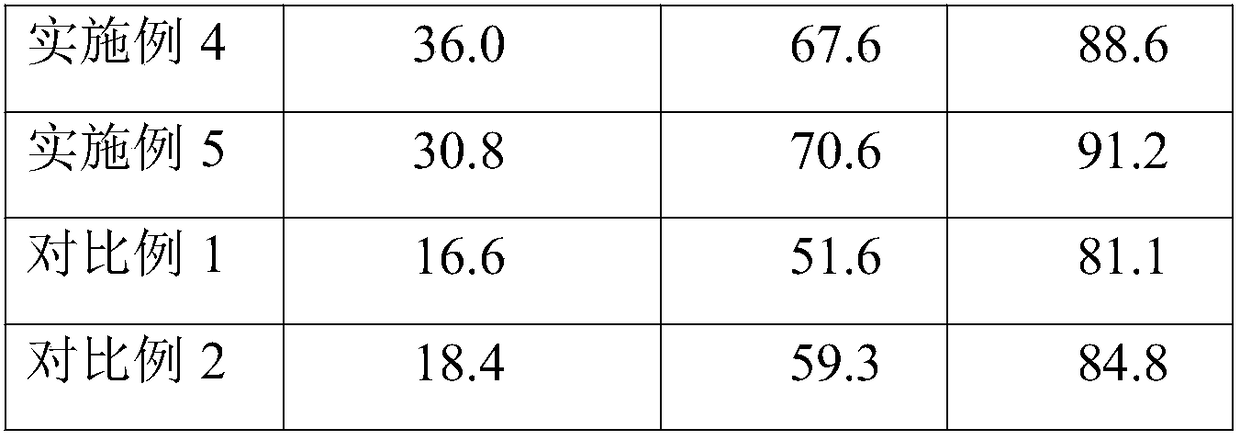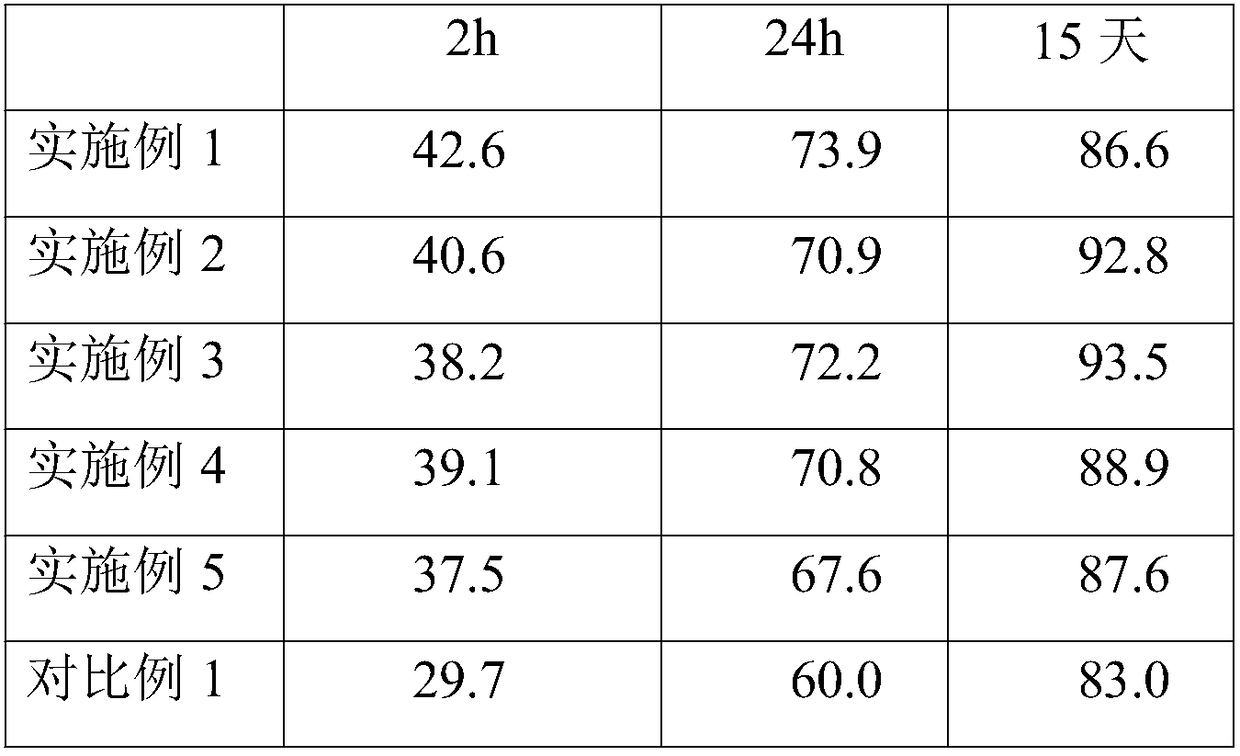Preparation method of vehicle-use purifying agent for in-situ degradation of VOCs
A purification agent and vehicle-used technology, applied in chemical instruments and methods, separation methods, organic compounds/hydrides/coordination complex catalysts, etc., can solve problems such as secondary pollution and human hazards
- Summary
- Abstract
- Description
- Claims
- Application Information
AI Technical Summary
Problems solved by technology
Method used
Image
Examples
preparation example Construction
[0012] The present invention also provides a preparation method of the vehicle purifier for in-situ degradation of VOCs, comprising the following steps:
[0013] (1) Add foaming agent to polypropylene resin and mix evenly, then obtain polypropylene fiber by electrospinning, and calcinate polypropylene fiber at 300-450°C for 2-4 hours to obtain porous carbon fiber;
[0014] (2) Mix porous carbon fiber, kaolin, soluble metal salt, silane coupling agent and organic titanate in a solvent to obtain a mixed system, then add inorganic acid to adjust the pH of the mixed system to be acidic, and then sonicate for 15~ 30min, then sealed and reacted at 80-120°C for 3-6h to obtain modified porous carbon fibers;
[0015] (3) Ultrasonic disperse the modified porous carbon fiber in the solvent for 15-30 minutes, then add polydiallyldimethylammonium chloride, continue ultrasonication for 30-45 minutes, then add graphene oxide, stir for 30-45 minutes and then dry , to obtain a car purifier fo...
Embodiment 1
[0026] A car purifier for in-situ degradation of VOCs, made of the following parts by weight: 8 parts by weight of kaolin, 8 parts by weight of tetraethyl titanate, 0.5 parts by weight of nickel acetate, and 1.5 parts by weight of silane coupling agent KH792 , 4 parts by weight of graphene oxide, 4 parts by weight of polydiallyldimethylammonium chloride, 3 parts by weight of N,N'-dinitrosopentamethylenetetramine, 105 parts by weight of polypropylene resin, hydrochloric acid (2M) 4 parts by weight, 50 parts by weight of ethanol.
[0027] The preparation method of the vehicle-use purifying agent of described in-situ degradation VOCs, comprises the following steps:
[0028] (1) Add N,N'-dinitrosopentamethylenetetramine to polypropylene resin and mix evenly, then obtain polypropylene fiber by electrospinning. The electrospinning process is: power supply voltage 50kV, spinning The temperature is 35°C, the relative humidity is 75%; the needle spacing of the multi-needle spinneret u...
Embodiment 2
[0034] A car purifier for in-situ degradation of VOCs, made of the following parts by weight: 12 parts by weight of kaolin, 5 parts by weight of tetraisopropyl titanate, 0.8 parts by weight of ferric chloride, and silane coupling agent KH5801.8 Parts by weight, 6 parts by weight of graphene oxide, 5 parts by weight of polydiallyldimethylammonium chloride, 2 parts by weight of N,N'-dinitrosopentamethylenetetramine, 100 parts by weight of polypropylene resin , 3 parts by weight of hydrochloric acid (3M), and 45 parts by weight of water.
[0035] (1) Add N,N'-dinitrosopentamethylenetetramine to polypropylene resin and mix evenly, then obtain polypropylene fiber by electrospinning. The electrospinning process is: power supply voltage 50kV, spinning The temperature is 35°C, the relative humidity is 75%; the needle spacing of the multi-needle spinneret unit is 35cm, and the number of needleheads of the spinneret unit is 90;
[0036] Calcining polypropylene fibers at 400°C for 2.5 h...
PUM
| Property | Measurement | Unit |
|---|---|---|
| particle size (mesh) | aaaaa | aaaaa |
Abstract
Description
Claims
Application Information
 Login to View More
Login to View More - R&D
- Intellectual Property
- Life Sciences
- Materials
- Tech Scout
- Unparalleled Data Quality
- Higher Quality Content
- 60% Fewer Hallucinations
Browse by: Latest US Patents, China's latest patents, Technical Efficacy Thesaurus, Application Domain, Technology Topic, Popular Technical Reports.
© 2025 PatSnap. All rights reserved.Legal|Privacy policy|Modern Slavery Act Transparency Statement|Sitemap|About US| Contact US: help@patsnap.com



